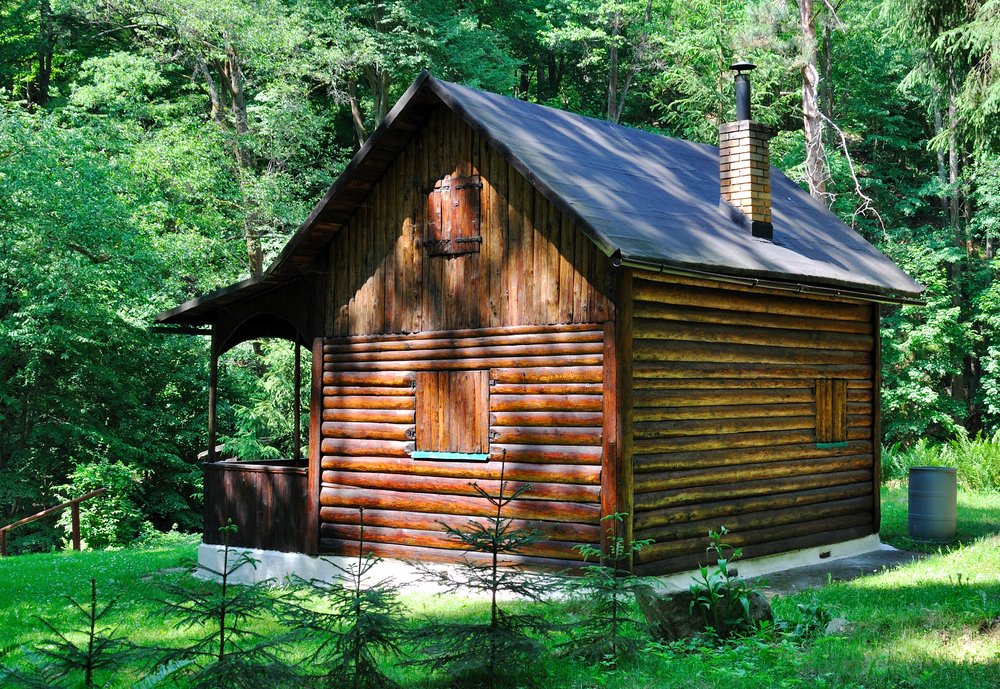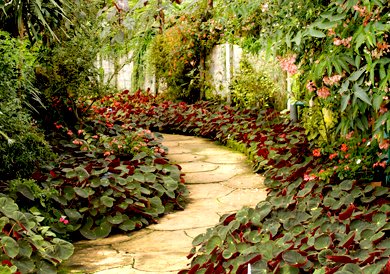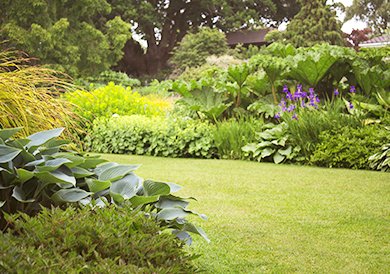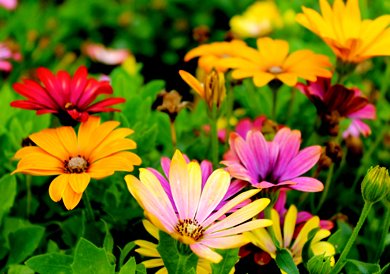Cabin Construction Cost Estimator
Project Specifications
DIY Labor Allocation
Adjust the percentage of work you plan to complete yourself:
Cost Analysis
Note: Estimates based on national averages. Consult local contractors for accurate quotes.
What’s the Real Cost to Build a Cabin? Breaking Down Every Expense
Building a cabin costs anywhere from $25,000 for a basic 200-square-foot structure to $600,000 for a luxurious 2,000-square-foot retreat. These numbers might seem daunting at first. A clear cost breakdown makes the investment easier to plan.
Most cabin construction costs range between $125 and $175 per square foot. This matches traditional home building expenses. Your choices can make these costs move up or down. DIY kit options start at $50 per square foot, while custom builds can reach $500 per square foot.
This piece breaks down all expenses you’ll face during cabin construction. You’ll learn about land costs, site preparation, materials, labor, and hidden extras that can affect your budget.
Average Cabin Building Costs in 2025
Planning to build a cabin in 2025? You’ll need to understand various costs that change based on several factors. Let’s take a closer look at the numbers to help you plan your cabin project better.
Cost per square foot breakdown
The cost to build a cabin in 2025 runs between $100 to $300 per square foot, which includes labor and materials. This range covers different construction methods and quality levels.
Here’s what you’ll pay based on construction type:
- Log cabin kits: $50 to $100 per square foot for the kit alone
- Prefab/modular log homes: $100 to $250 per square foot installed
- Custom log homes: $150 to $400 per square foot
- Turn-key cabins: Total costs from $65,000 to $500,000 based on size, location, and amenities
If you’re thinking about a kit, multiply the kit price by 2.5 to 2.75 to get your total project cost – this covers construction labor and finishing. Many people don’t realize that log cabins often cost more than regular homes, which usually run $100 to $200 per square foot.
Your final price depends on the wood type, design complexity, and material quality. High-end homes with custom layouts and special features can cost up to $500 per square foot.
Small vs. large cabin cost comparison
Bigger cabins need more materials and labor, so they cost more overall. But here’s something interesting – smaller cabins usually have a higher cost per square foot because fixed costs spread across less space.
Here’s a size-based cost breakdown:
- Small cabins (400-1,000 sq. ft.): $100-$150 per square foot, perfect for weekend getaways
- Medium cabins (1,000-2,000 sq. ft.): $150-$200 per square foot
- Large cabins (2,000+ sq. ft.): $250+ per square foot
A cozy 200-square-foot cabin costs about $25,000, while a roomier 1,500-square-foot lodge runs around $225,000. Budget-conscious builders can get a 500-square-foot cabin kit for $25,000 to $50,000 – just for the kit.
Larger cabins might cost more upfront, but they often provide better value over time, especially if you plan to use the space often or live there permanently.
Regional price variations
Location plays a big role in your cabin’s cost. Construction expenses change from state to state because of different labor rates, material availability, and building rules.
To cite an instance, a 2,000-square-foot house costs about $274,000 in Mississippi or Arkansas, but the same house in Hawaii jumps to $410,000. These differences come from local labor markets, material shipping costs, and building requirements.
West Coast builders pay $220-$280 per square foot due to expensive labor and strict building codes. East Coast prices average $200-$260 per square foot, with city areas costing more. The Midwest offers better deals at $150-$190 per square foot thanks to lower labor and material costs. Southern states fall in the middle at $160-$210 per square foot.
Your building site’s terrain and accessibility are vital cost factors. Mountain or hill construction costs more than flat land. Remote spots add 10-25% to your budget through material delivery charges.
Here’s what a 500-square-foot log cabin (averaging $75,000) plus land costs in different states:
- Wyoming: $76,000
- Montana: $77,300
- Vermont: $82,400
- California: $114,092
These regional differences help you set a realistic budget for your location and avoid surprise costs during your cabin project.
Land and Site Preparation Expenses
Your cabin dream starts with finding the right property and preparing it well. These initial steps will affect your total budget. The land and site preparation might take up 20-30% of your total cabin building costs.
Property purchase considerations
The perfect plot needs more than just beautiful views. The land’s slope ranks among the biggest factors that shape its cost. A flat property at $100,000 might be more economical than a sloped one at $60,000. Even slight slopes make construction tougher and drive up costs.
The soil’s quality plays a vital role too. Experts say that “loamy soil is best for a building site”. Building on rocky or wet ground makes foundation work pricier, so your budget will need to adjust.
These tests must happen before you buy:
- Perc test: Shows how well liquid moves through soil and tells if a septic system will work
- Soil testing: Shows what’s in the soil and how much weight it can hold
- Title search and survey: Shows exact boundaries and reveals any property liens
The zoning rules need careful review. Rural areas often lack zoning laws, which means your neighbors “may be able to park old junk cars and pitch a tent” right next to your peaceful cabin.
Land clearing and grading costs
After buying your land, you’ll need to clear and grade it. Land clearing runs between $1,565 and $4,520, with most owners paying about $2,900. Heavily wooded areas cost more – between $3,395 and $6,155 per acre.
A level building site needs proper grading for good drainage. This costs $0.08 to $2.00 per square foot. Most residential projects cost $770 to $3,000. Your costs might rise with:
- Steep slopes that need lots of digging
- Soil full of rocks
- Lots of trees and thick vegetation
- Hard-to-reach locations
You might also need land clearing permits. These usually cost $200 to $250, but prices change by location.
Foundation options and pricing
Your cabin needs a solid base that gives stability and lasts long. Size, location, and weather help determine your choice.
Gravel foundations give you an economical choice. They cost $3.00 to $5.00 per square foot for basic work, reaching $8.00 to $12.00 for complex projects. Small cabins and stable soil work well with these foundations.
Concrete foundations cost more but last longer and stay stronger. A basic slab starts at $6.00 to $10.00 per square foot. Double-wide buildings must have concrete foundations.
Utility connection fees
Getting utilities to your cabin takes a big chunk of money that many forget about. Empty land needs $9,000 to $34,500 for utilities.
Power lines cost $5.00 to $25.00 per foot. The price depends on whether they go above or below ground. Distance from existing lines drives the cost up or down.
Water access comes two ways:
- Municipal water connection: Runs $1,000 to $6,000
- Well drilling: Costs $5,000 to $10,000
Your sewage options and costs include:
- Municipal sewer connection: $1,500 to $5,700
- Septic system installation: $3,400 to $11,500
Plan your utilities early. Setting them up before foundation work saves you from expensive changes later.
Cabin Materials and Construction Costs
Your cabin project’s material choices make up about 50% of the total building costs. You can pick anything from budget-friendly to high-end options. These choices will affect your upfront costs and determine how much maintenance you’ll need down the road.
Log cabin vs. conventional framing
Log homes and regular stick-built structures end up costing about the same, even though their original prices look different. A typical pine log cabin kit that’s weather-tight costs about $102,000. A comparable stick-built frame package runs $75,000-$80,000.
The real difference shows up during construction. Log homes give you a complete wall system you can stack in about three days. Stick-built homes need many more steps:
- Framing (2-3 days)
- Exterior sheathing
- Wrapping
- Siding installation
- Insulation
- Interior wall finishing
Wood choice affects your budget by a lot. A 1,000-square-foot cabin will cost you:
- Pine, Spruce, or Fir: $100,000-$300,000
- Cypress: $110,000-$310,000
- Cedar or Redwood: $150,000-$350,000
Cedar and redwood cost more because they naturally resist rot and pests. Pine remains your most budget-friendly choice.
Roofing and exterior finishing expenses
Roofing takes up much of your exterior budget. Different materials come with different price tags. Standard 30-year architectural shingles and 29-gage metal roofing cost about $250 per 100 square feet with labor. Premium baked-on enamel metal roofing runs $275-$300 per 100 square feet.
Exterior finishing needs staining and sealing to protect against weather. Staining materials cost about $1.50 per square foot, and labor usually doubles that. You’ll need $1,000-$5,000 every 2-5 years to maintain the sealant.
Windows and doors budget
Windows and doors eat up about 10% of your total cabin budget. Energy-efficient options matter a lot for cabins. They help control indoor temperatures whatever heating and cooling systems you have.
Log cabin windows cost more to install than regular homes because putting them into solid log walls needs special tools and know-how. Quality cabin windows come in several styles:
- Double-hung windows that open from top or bottom
- Casement windows with secure hinges that open fully
- Awning windows that open at angles to keep rain out
Fiberglass doors with wood grain finishes last longer and handle weather better than standard wood doors. They cost more upfront but save money over time.
Interior finishing costs
Interior finishing prices swing widely based on quality and how hard they are to install. Materials alone for a 180-square-foot cabin cost about $1,527 (based on 2013 figures plus inflation).
Flooring materials run $3.99-$5.99 per square foot plus $1.50-$2.00 per square foot to install. Drywall costs less than other wall coverings, while stone or timber bump up the price quite a bit.
Kitchen costs break down like this:
- Cabinets: $6,500-$10,500
- Countertops: $50-$150 per square foot
- Appliances: $2,500-$6,800 for a complete set
Interior painting or staining materials cost about $1.50 per square foot, with labor adding triple that amount. Tongue and groove wall coverings run about $1.90 per square foot for materials.
Yes, it is true that interior choices affect your cabin’s final cost dramatically. Plasterboard keeps costs down as a manufactured product. Natural materials like granite or specialty timber cost more but last longer and look better.
Labor and Professional Service Fees
Professional expertise makes up much of your cabin building budget and takes 30-40% of total project costs. You can make better decisions about hiring services or doing work yourself by understanding these expenses.
Contractor vs. DIY cost comparison
A general contractor adds about 20% to your total project cost. This extra cost gets you complete project oversight from start to finish, plus the contractor hires and checks subcontractors for you. Specialized trades come with their own rates – $50-100 per hour for electrical work and $45-200 per hour for plumbing services.
Building your cabin yourself can save you about 60% on labor costs. New builders should know this path requires:
- A big time investment (usually 2-3 times longer than professional builds)
- Construction skills or eagerness to learn
- Tools you’ll need to buy or rent
- Skills to manage the project
- Understanding of building codes and regulations
Many cabin owners take a mixed approach. They hire professionals for complex work like electrical and plumbing but handle the simple tasks themselves. Your choice should weigh potential savings against your time, skills, and what your labor is worth.
Architect and design fees
Architects charge their fees in several ways:
- Percentage of construction costs: 5-20% based on complexity
- Hourly rates: $100-250 per hour based on experience
- Fixed fee: $2,000-20,000 for simple plans or $15,000-80,000+ for complete design services
Custom cabin architectural services usually cost 8-15% of total construction costs. A $300,000 cabin might need $24,000-45,000 in design fees. Prominent architects with years of experience charge $150-250 per hour. Junior architects and drafters ask $65-150 per hour.
Architects do more than draw plans. They can help your cabin be more energy efficient, guide you through building codes, and help you save money with smart material choices and construction methods.
Permit and inspection costs
Legal cabin construction needs building permits, and costs vary substantially by location. Permit fees usually run $400 to $2,500. Some areas charge by square footage, while others have flat fees.
Some places calculate permit costs as a percentage of construction value. They might charge $100 plus $15 for each additional $1,000 of estimated construction cost. Fees often double for construction found without permits.
Your cabin will need specific permits for:
- Septic system installation
- Well drilling
- Electrical work
- Plumbing systems
- Driveway access (if you’re off public roads)
Inspections check if your work meets building codes at different stages. Some areas include inspection fees with permits, others charge $50-100 per inspection. Cabins typically need 4-8 inspections, covering foundation, framing, electrical, plumbing, and final occupancy.
Permit requirements can get complex. Many cabin owners find that professional help from contractors or architects saves time and prevents expensive compliance mistakes, even though it costs more upfront.
Utility Installation and Infrastructure
Your cabin project’s utility infrastructure is a vital investment that shapes both your build costs and long-term expenses. The choices you make will affect your cabin’s comfort level, environmental footprint, and overall budget.
Water options: well vs. municipal
Water access comes down to two main options with different cost structures. A private well needs $5,000 to $10,000 on average, which makes it a big upfront investment. Municipal water connections cost $1,000 to $6,000 and are usually more economical if they’re available.
The cost difference goes beyond installation. Well water eliminates monthly bills but you’ll need to handle water quality testing and system maintenance. Municipal water comes with monthly charges but gives you consistently treated water that meets regulatory standards.
Septic system vs. sewer connection
Your waste management choice matters too. A septic system installation runs between $3,400 and $11,500, and you’ll pay about $200-$400 every 3-5 years for pumping. Sewer system connections cost $1,500 to $5,700 plus yearly fees of about $600-$800.
Remote cabins usually need septic systems. Composting toilets work well when traditional septic installation isn’t possible.
Electrical and heating solutions
Electricity costs run $5 to $25 per linear foot, depending on overhead or underground installation. Remote locations can make this cost skyrocket, especially when utility poles are far away.
Heating options vary in both setup and running costs:
- Electric baseboards are easy to install but cost more to run
- Propane furnaces cost $6,500-$10,500 with lower monthly bills
- Wood stoves cost $5,000 with installation and save money long-term
- Pellet stoves cost $1,700 to $3,000 plus installation
Off-grid alternatives and costs
Remote cabins often benefit from off-grid systems instead of utility lines. A complete off-grid solar power system costs $45,000 to $65,000. This big investment eliminates future electricity bills.
Cabin owners often choose mixed solutions:
- Solar panels handle basic electrical needs
- Propane works for heating, cooking, and water heating
- Rainwater collection systems supply water
- Composting toilets manage waste
Your utility decisions should balance immediate costs with long-term expenses. Grid connections usually cost less upfront, but off-grid systems give you more independence and might save money over time, especially in remote locations.
Hidden Costs and Budget Contingencies
Hidden costs of building a cabin can catch first-time builders by surprise. Smart planning helps you avoid budget overruns and keeps your cabin project financially stable.
Seasonal building considerations
Construction timing affects your overall costs by a lot. Bad weather can stretch project timelines and drive up expenses. Construction might stop completely during winter months in snowy regions. This forces contractors to charge premium rates once work resumes. It’s worth mentioning that choosing optimal weather seasons speeds up completion and helps dodge weather-related delays that inflate your budget.
Delivery surcharges for remote locations
Remote cabin sites rack up hefty delivery fees that often surprise unprepared builders. These remote area charges kick in when your site sits away from regular delivery routes or doesn’t have a nearby depot. Courier companies label locations as “remote” if they’re away from standard pick-up or delivery routes. These charges can add 10-25% to your material budget, especially when you have sites that need special vehicles to handle tough terrain.
Insurance requirements
Insurance stands as a crucial yet often overlooked cost in cabin construction. Your mortgage requirements and proper insurance coverage must be in place before, during, and after construction:
- Course of construction insurance protects materials and covers physical damage during building
- Homeowner’s insurance costs vary based on location, cabin value, and risk factors
- Policies typically exclude coverage for nuclear war, insect infestations, wood rot, and maintenance-related issues
Your cabin’s fire rating (1-10 scale), distance from fire hydrants, and access to firefighting water sources shape the final cost.
Maintenance expenses over time
Cabins need regular upkeep, with costs running $500-$1,500 per year for a 500 square foot structure based on DIY maintenance versus professional help. Good maintenance stops small problems from becoming big repairs. Skipping basic upkeep leads to serious damage that costs nowhere near what preventative care would. Log cabins need fresh staining every 3-5 years with water-based stains or 5-7 years for oil-based finishes.
Conclusion
A cabin build needs solid planning and financial preparation. The costs range from $25,000 to $600,000. A clear understanding of each expense helps create realistic budgets and prevents surprises.
Your project’s foundations depend on land selection, site preparation, and utility choices. The materials you choose and labor arrangements affect both immediate costs and maintenance needs. Location-based price differences and the construction season play significant roles in the final cost.
Set aside 15-20% of your budget for unexpected expenses. This extra money safeguards against material price changes, weather delays, and hidden costs that emerge during the build.
Good planning and research simplify the cabin building process. You can stay within budget by categorizing expenses, exploring options, and making smart decisions about materials and labor. This approach helps create your perfect getaway.





